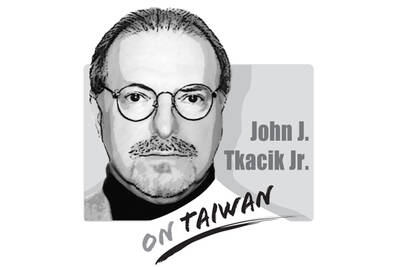Will the US Federal Reserve speed up its interest rate hikes this year? The Fed will have to consider US economic growth, the inflation outlook and the COVID-19 situation, but as the risk posed by the Omicron variant of SARS-CoV-2 appears controllable and employment data last month showed a still-tight labor market, a rate hike cycle might start as early as March, when the US Federal Open Market Committee (FOMC) is to discuss measures to curb inflation. The Fed has maintained its target interest rate at zero to 0.25 percent since March 15, 2020.
The employment numbers released on Friday were a shot in the arm for the US economy and Fed Chairman Jerome Powell. The unemployment rate dropped to 3.9 percent from 4.2 percent in November, and average wages continued to rise, up 0.6 percent from the previous month.
Meanwhile, nonfarm payroll employment increased by 199,000 last month on a seasonally adjusted basis, following upward revisions in the previous two months, the US Department of Labor reported. While public health concerns remain, the employment data continued to boost the economy, and, based on data compiled by Reuters and Bloomberg, the probability that the FOMC will lift the interest rate in March is above 70 percent.
The committee said last month that it would wind down the Fed’s bond-buying program faster than first announced at its November meeting, aiming to end the program in March. However, the minutes of its meeting last month, which were released on Wednesday, revealed not only FOMC policymakers’ thoughts of a faster timeline to raise the rate and scale back asset purchases, but also that they discussed reducing the Fed’s balance sheet, which has ballooned to US$8.8 trillion following years of purchases of Treasuries and mortgage-backed securities.
The minutes showed the Fed’s hawkish position on monetary policy, but at the same time confused the public with regard to its intentions. On the one hand, a quick interest rate increase would mean that the Fed has confidence in the US economy and that inflation can be brought under control. Rate hikes would increase people’s income from savings, boost consumption and further stimulate the economy.
On the other hand, the markets were upset by the FOMC’s discussions about reducing the balance sheet, with investors on Thursday worrying that the central bank’s moves might reduce global market liquidity.
The Fed’s policies have over the past two years pumped liquidity into global markets, helping them weather the COVID-19 pandemic. Losing this boost is a legitimate worry for investors, who can only speculate how and when the Fed might start working toward shrinking its balance sheet.
The anticipated rate hike and balance sheet reduction would lead to rising US Treasury yields and a stronger US dollar, which could in turn lead to greater volatility and affect fund flows into emerging markets, and their currencies and equities, including Taiwan’s.
Fortunately, Taiwan has a strategic advantage — its semiconductor industry — and its external debt burden is light, so Taiwan’s economy would not be hit hard by the Fed’s policy changes, although the stock market in Taipei might experience a mild pullback due to capital outflows.
As several central banks — including in South Korea, Singapore, New Zealand, the UK and Russia — have tightened their monetary policy, it is only a matter of time until the central bank in Taipei raises its rates. This move would warrant investors’ closer attention to leverage in financial markets and investment plans, as well as measures for vulnerable groups and pandemic-hit businesses.
You wish every Taiwanese spoke English like I do. I was not born an anglophone, yet I am paid to write and speak in English. It is my working language and my primary idiom in private. I am more than bilingual: I think in English; it is my language now. Can you guess how many native English speakers I had as teachers in my entire life? Zero. I only lived in an English-speaking country, Australia, in my 30s, and it was because I was already fluent that I was able to live and pursue a career. English became my main language during adulthood

Somehow, US intelligence identified “the Houthis’ top missile guy” and pinpointed his exact location. At 1348 hours (Washington time), March 15, President Trump’s national security advisor Mike Waltz texted, “positive ID of him walking into his girlfriend’s building.” The unsuspecting Romeo entered. High above, the drone monitoring the building registered a flash. When the smoke cleared, Mr. Waltz texted, “…And it’s now collapsed.” RIP. The star-crossed “top missile guy” had been target number one in the now uproarious US Navy bombing campaign on that Sunday against the Yemeni rebels who have been holding the Red Sea hostage since October 19,
Taiwan on Monday celebrated Freedom of Speech Day. The commemoration is not an international day, and was first established in Tainan by President William Lai (賴清德) in 2012, when he was mayor of that city. The day was elevated to a national holiday in 2016 by then-president Tsai Ing-wen (蔡英文). Lai chose April 7, because it marks the anniversary of the death of democracy advocate Deng Nan-jung (鄭南榕), who started Freedom Era Weekly to promote freedom of expression. Thirty-six years ago, a warrant for Deng’s arrest had been issued after he refused to appear in court to answer charges of
The Opinion page has published several articles and editorials over the past few weeks addressing Taiwan’s efforts to leverage unique or strong aspects of its culture to increase international awareness of the nation. These have included submissions by foreign journalists and overseas students, highlighting how bubble milk tea, Guinness World Record attempts, the entertainment sectors, impressive scenery, world-class cuisine and important contributions to the high-tech supply chain can enhance Taiwan’s recognition overseas and therefore its soft power. That entails competing for attention in already crowded sectors. Other nations, after all, offer popular entertainment exports, beautiful scenic spots and great food.